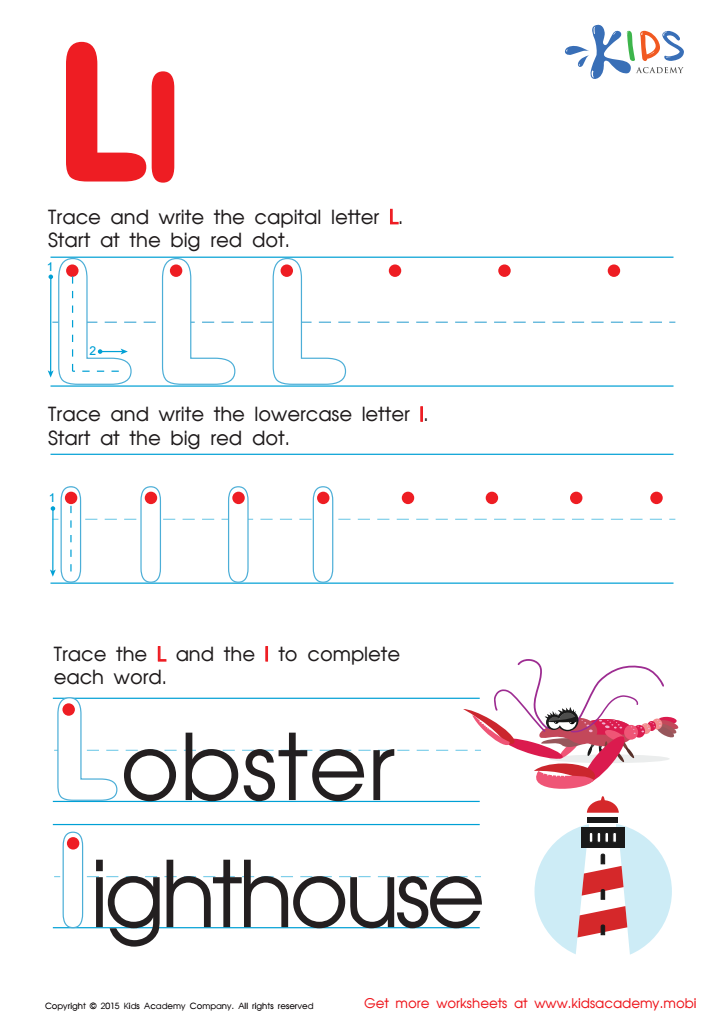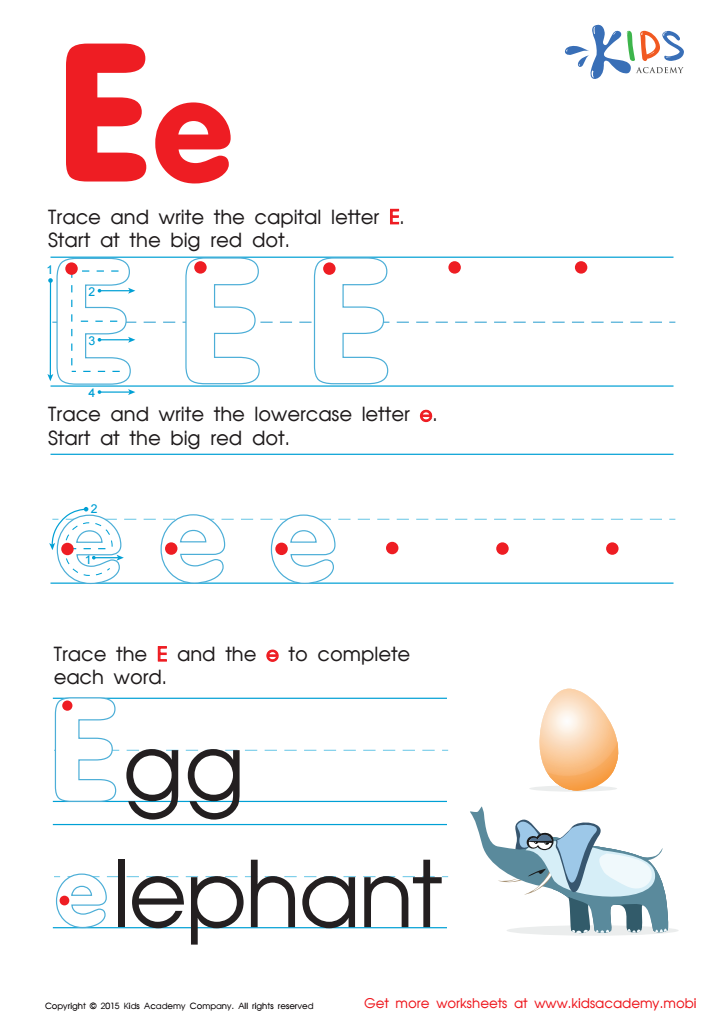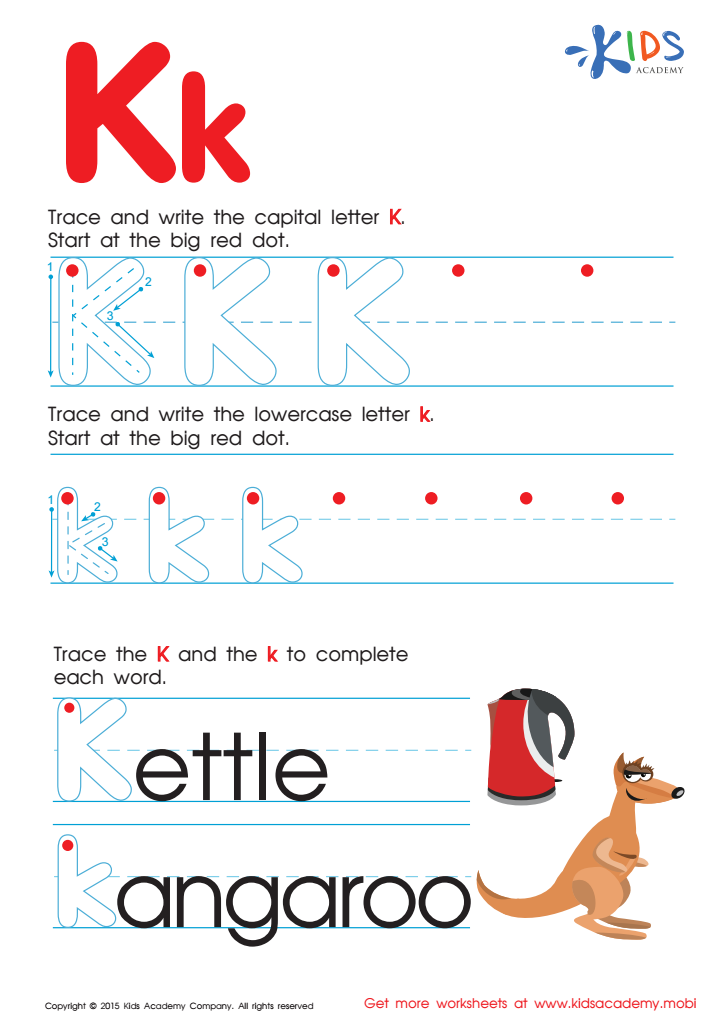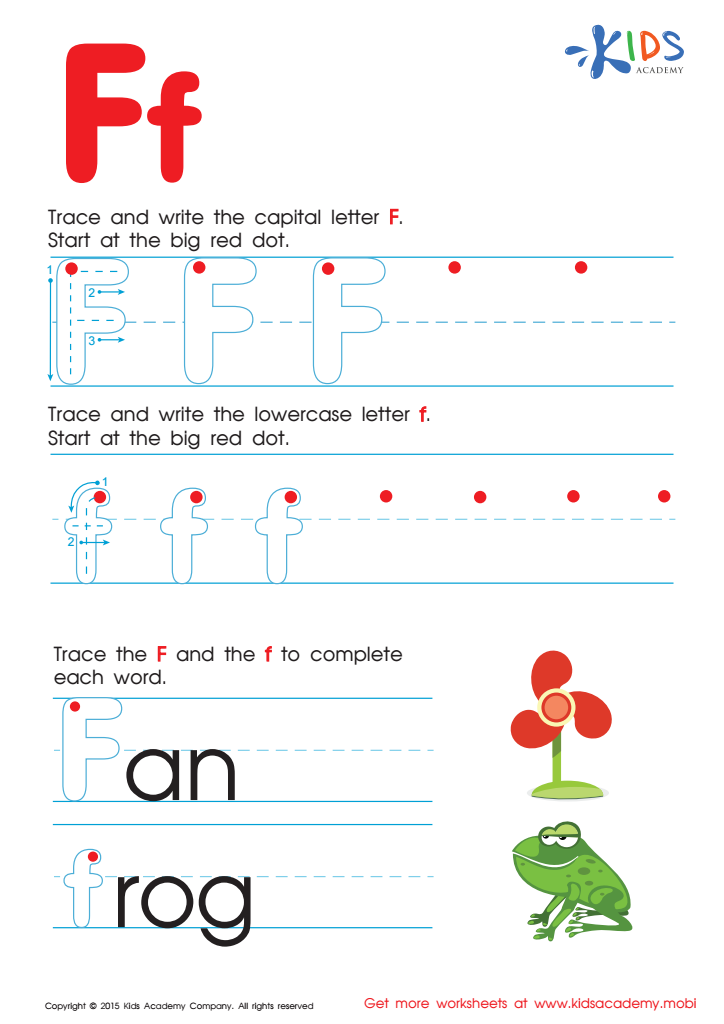Handwriting Skills Normal Tracing Letters Worksheets for Ages 5-6
5 filtered results
-
From - To
Enhance your child's handwriting skills with our engaging Normal Tracing Letters Worksheets designed specifically for ages 5-6. These printable resources feature colorful letters and fun illustrations that keep young learners excited while they practice tracing each letter of the alphabet. Perfect for early childhood education, these worksheets help develop fine motor skills, reinforce letter recognition, and boost confidence in writing. Each worksheet is carefully crafted to guide children in proper letter formation, making learning enjoyable and effective. Support your child's learning journey with these essential handwriting tools, ensuring a strong foundation for their literacy skills. Download today and watch their skills flourish!


Letter Q Tracing Page


Letter L Tracing Page


Letter E Tracing Page


Letter K Tracing Page


Letter F Tracing Page
Handwriting skills, specifically normal tracing of letters for children aged 5-6, are crucial for several reasons. Firstly, this stage of development coincides with a child's early literacy acquisition. Proficient handwriting helps solidify letter recognition and phonemic awareness, which are foundational for reading and writing. When children practice tracing letters, they enhance fine motor skills, essential for overall hand-eye coordination and dexterity, tools that they will use in numerous tasks beyond writing.
Furthermore, handwriting serves as a form of self-expression. As children learn to construct letters and form words, they gain confidence in their ability to communicate. This empowerment can inspire a love for learning and stimulate critical thinking.
Moreover, the act of handwriting fosters memory retention. Research indicates that writing by hand can improve cognitive functionality and recall abilities compared to typing or digital interactions. Lastly, as we continue to navigate a technology-driven environment, handwriting remains relevant—especially during formative schooling years. In summary, encouraging normal tracing of letters is an investment in children’s educational foundation, promoting not only academic skills but also personal growth and development in fine motor skills. Parents and teachers can nurture well-rounded learners by prioritizing this fundamental skill.
 Assign to My Students
Assign to My Students
















